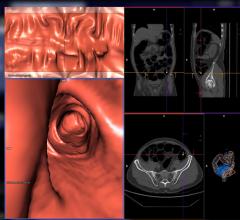December 16, 2008 – Researchers from Yale University School of Medicine compared narrow-band imaging (NBI) without high magnification to standard white light colonoscopy in differentiating colorectal polyps during real-time colonoscopy and found that NBI was not more accurate than white light colonoscopy.
The study found, however, a significant learning curve for these experienced endoscopists using NBI as a new diagnostic tool. Once this learning curve was achieved, NBI performed significantly better. The study appears in the December issue of “GIE: Gastrointestinal Endoscopy,” the monthly peer-reviewed scientific journal of the American Society for Gastrointestinal Endoscopy (ASGE).
Endoscopy is a procedure that uses an endoscope — a thin, flexible tube with a light and a lens on the end to look into the esophagus, stomach, duodenum, small intestine, colon, or rectum, in order to diagnose or treat a condition. Colonoscopy is frequently used to screen for colorectal cancer, which most typically develops from polyps. The two main polyp types are adenomatous, which are precancerous and hence require removal, and nonadenomatous, which do not have a high likelihood of developing into cancer.
Narrow-band imaging is a new optical technology that modifies white light by using only certain wavelengths to enhance the image. The technology provides more visual detail of the lining of the colon (including polyps) and of the small blood vessels near the surface of the polyps. At the present time, there is no widely adopted, easily applied method for distinguishing between adenomatous and nonadenomatous polyps during real-time colonoscopy. From a practical standpoint, the ability to distinguish the two would allow the endoscopist to remove only those polyps with precancerous potential.
“In this prospective trial, we aimed to compare standard broadband white light colonoscopy with narrow-band imaging for the differentiation of colorectal polyps during real-time colonoscopy by using a modified Kudo pit pattern classification and vascular color intensity grading,” said study lead author Jason Rogart, M.D., Yale University School of Medicine, New Haven, CT. “Overall, NBI accuracy was 80 percent, compared with 77 percent for white light alone. We also demonstrated that improved performance can be achieved over time. NBI was most useful in correctly identifying adenomas, polyps that have the most risk of developing into cancer, especially those that are small.”
The authors said, to their knowledge, this is the largest study to date that addresses the question of whether NBI outperforms ordinary white light in predicting the histopathologic diagnosis of polyps during real-time colonoscopy.
For more information: www.asge.org


 February 06, 2024
February 06, 2024 









